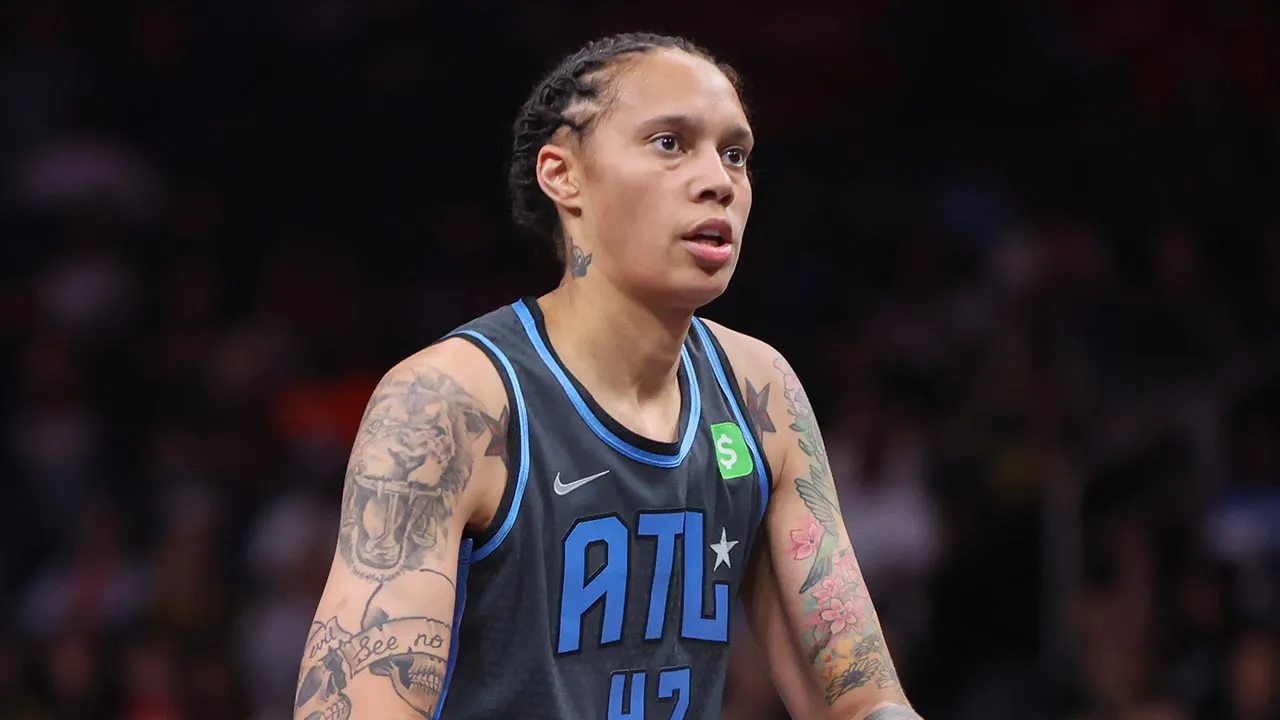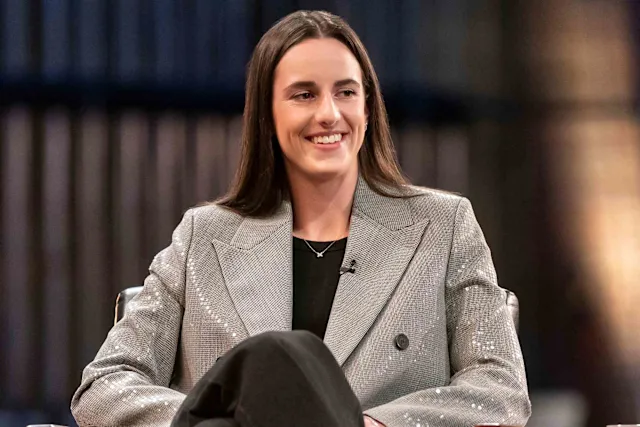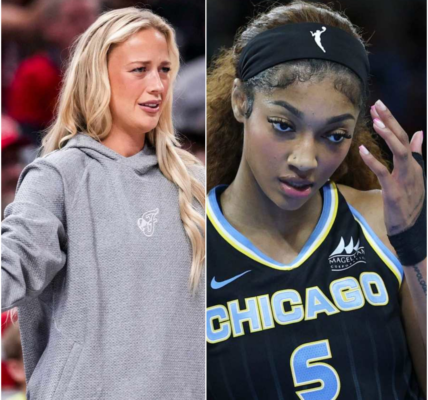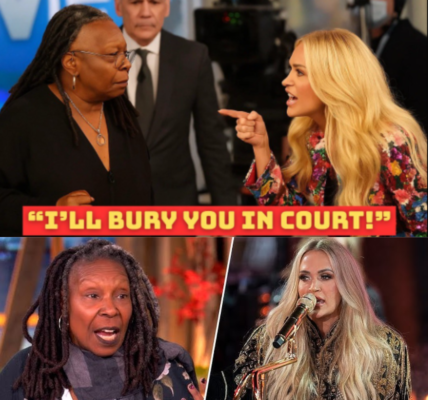BREAKING: Brittney Griner is back in the spotlight—not for basketball, but due to a viral clip reigniting gender rumors. As Caitlin Clark’s fame rises and past controversies resurface, fans are questioning Griner’s eligibility and the WNBA’s silence. The debate is heating up—and it’s bigger than the game.
For over a decade, Griner has been one of the most recognizable names in women’s basketball. A 6’9” powerhouse. A two-time Olympic gold medalist. A symbol of resilience and advocacy. But now, a swirling mix of leaked footage, resurfaced media, and social speculation has turned the spotlight on something far more personal: her gender identity.
What started as a trash-talking incident in a heated WNBA game has snowballed into a nationwide debate that’s splitting fans, igniting political pundits, and placing the league under a glaring spotlight it may not be ready for.
A Viral Moment, a Silent Reaction
The controversy erupted after a tense June matchup between the Phoenix Mercury and the Indiana Fever, where Griner’s physical foul against rookie phenom Caitlin Clark led to a sideline video going viral. In the footage, Griner appears to mouth a comment—some viewers claimed she said “trash,” others alleged “f***ing white girl.”
Without official audio, the internet did what it does best: fill in the blanks.
Former NCAA swimmer and outspoken activist Riley Gaines reposted the clip on X (formerly Twitter), stating, “If this had been the other way around, Clark would’ve been crucified. Why is the WNBA silent when it’s Brittney?”
The post racked up 9.2 million views in 24 hours.
But what truly ignited the firestorm wasn’t what was allegedly said—it was what happened next.

The Topless Post That Sparked a Firestorm
Shortly after the video went viral, an old topless photo of Griner—taken from her own Instagram account years prior—resurfaced. The image showed Griner shirtless at home, with a caption referencing her love for body freedom and authenticity.
The photo remained live for over 100 weeks. No takedowns. No content filters. Which immediately raised a startling question: Why didn’t Instagram’s AI remove it?
Instagram typically removes or blurs female topless content unless it falls within the narrow confines of artistic, medical, or protest exceptions. Yet this image survived. Critics began suggesting that the platform’s algorithm may have registered Griner’s body as male.
That claim—unverified but widely shared—reignited long-standing rumors about Griner’s biological sex. Within 48 hours, the debate had shifted from trash talk to something far more combustible: gender verification in professional sports.

A History of Rumors, Now Supercharged
Whispers about Griner’s gender identity are nothing new. She’s long had a deep voice. She’s always stood out physically—even among elite athletes. And in 2013, during a candid interview, she acknowledged that she was bullied as a child and often called names that implied she wasn’t “really a girl.”
Still, none of this ever interfered with her athletic career. Griner competed for Baylor, was the #1 draft pick in 2013, and has represented Team USA internationally multiple times. No league, team, or governing body has ever questioned her eligibility.
So why now?
Because Caitlin Clark has changed everything.

The Caitlin Clark Effect
Clark, the 22-year-old sensation from Iowa, has brought an unprecedented wave of attention—and money—to the WNBA. According to ESPN data, WNBA viewership in May 2025 rose 156% compared to the same time last year. Clark’s jersey became the best-selling women’s basketball item in history within a month of her debut.
She’s not just a star—she’s a movement. One that’s rapidly reshaping the WNBA’s landscape.
And as her fame soars, so does the scrutiny of the league’s older guard. That includes players like Griner, who now find themselves under a microscope in ways they hadn’t anticipated.
“The WNBA is transforming right in front of us,” says sports sociologist Dr. Miriam Lopez. “Clark represents the future—youthful, brandable, and overwhelmingly embraced. The older generation, especially those with complicated media legacies like Griner, are facing a level of pressure they haven’t dealt with before.”
That pressure may have triggered a social backlash Griner never expected.
Biological Advantage or Public Perception?
While there’s no scientific proof that Griner is anything other than a cisgender woman, critics argue that the question of competitive fairness remains valid.
Testosterone, for example, plays a critical role in athletic performance. According to a 2020 report from the British Journal of Sports Medicine, athletes who underwent male puberty retain strength and endurance advantages even after years of hormone suppression.
This debate isn’t just academic—it has real-world consequences.
In 2023, World Athletics, the global governing body for track and field, banned transgender women who experienced male puberty from competing in female events. That decision followed years of public outcry and scientific reviews.
Supporters of that ban argue that women’s sports were created to protect a historically disadvantaged group: biological females.
“It’s not bigotry—it’s biology,” said former Olympic swimmer Sharron Davies, another critic of transgender inclusion in women’s sports. “Level playing fields matter. Period.”
But LGBTQ+ advocates warn that this kind of thinking leads to witch hunts.
“You don’t need evidence anymore—just a rumor,” said Aleah Harris of Equality in Sports. “Suddenly, someone like Griner becomes a national spectacle, not because of anything she’s done, but because of what people think they see.”
Silence, Social Media, and Speculation
Perhaps the most puzzling part of this story is Griner’s silence.
No tweet. No interview. Not even a publicist’s denial. Just quiet.
In today’s rapid-response PR world, that kind of silence often speaks louder than words. And it’s only stoked the flames.
Popular sports analyst Skip Bayless addressed the issue on his show:
“This isn’t just about what she said or didn’t say. It’s about the WNBA’s unwillingness to get ahead of the story. If this were any other league, we’d have statements, press conferences, investigations. But here? Crickets.”
His remarks mirror a growing sentiment that the WNBA has a double standard—one that protects certain players while harshly judging others.
The Political Firestorm
It didn’t take long for politicians to jump into the fray.
Senator Josh Hawley (R-MO) tweeted:
“When sports organizations ignore clear evidence and pander to identity politics, they destroy trust. The WNBA owes fans clarity.”
In contrast, Rep. Alexandria Ocasio-Cortez (D-NY) pushed back, calling the attacks on Griner “a vile attempt to discredit one of America’s greatest athletes.”
Once again, Griner has become more than an athlete—she’s a political football.
Gender Verification: The Next Battle?
The incident has reignited discussion around gender verification standards in women’s sports.
Should leagues implement mandatory hormone testing? Should there be third-party verification panels? Or is the very idea a dangerous violation of privacy and dignity?
The International Olympic Committee (IOC) currently allows transgender women to compete if their testosterone levels remain below 10 nmol/L for 12 months. Critics argue this threshold is too lenient. Others say even testing is discriminatory.
The WNBA has no public policy on the matter—something likely to change.
“Sports can no longer afford to ignore these conversations,” says Dr. Lopez. “We need transparent, science-backed policies that protect competition and human rights.”
The Bigger Picture: What This Means for Women’s Sports
This controversy reveals the fragile tightrope women’s sports now walk. On one side: the push for diversity, equity, and inclusion. On the other: the fight for fairness and biological integrity.
The stakes are higher than ever.
With the WNBA’s revenue projected to reach $180 million in 2025—up 38% from 2023—sponsors and networks are watching closely. The wrong move could alienate entire audiences. The right move could set a precedent for every women’s league in the world.
For now, the league remains silent. So does Griner.
But the conversation? It’s only getting louder.
Conclusion
In a season already filled with headline-making moments, the Griner-Clark saga has exploded into something much larger than basketball. What started as a tense foul and a few mouthed words has evolved into a cultural firestorm—one that challenges how we view gender, fairness, and identity in modern sports.
Whether the WNBA chooses to address the speculation or not, the public has made one thing clear:
This isn’t just a game anymore.




